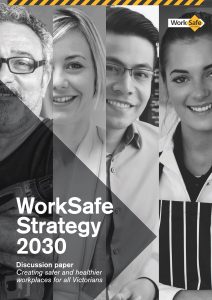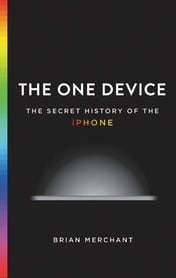I travelled to the 21st World Congress on Safety and Health in Singapore as a delegate and a media representative from my home in Australia. Was it worth attending? Yes and no. That may seem a weak answer but I attended in two capacities with two purposes – as an occupational health and safety (OHS) professional and an independent media representative. Both were satisfied a little bit and both could have been better. Here’s a personal report on my professional and media experiences at the World Congress.
Category: technology
Configuring the safety profession for the future
 In support of this year’s election of new Board members to the Safety Institute of Australia, the Safety on Tap podcast has granted each nominee ten minutes to introduce themselves. Some of these episodes raised the following points of interest:
In support of this year’s election of new Board members to the Safety Institute of Australia, the Safety on Tap podcast has granted each nominee ten minutes to introduce themselves. Some of these episodes raised the following points of interest:
- The need to change the demographics of the occupational health and safety (OHS) profession to reflect society.
- Any organisation that is undergoing change must acknowledge that even though it may be replacing “old school” thinking and structures, sustainable progress is best achieved by accepting the future is built by “standing on the shoulders of giants”.
- Just because an organisation or profession has been structured one way in the past does not mean that structure remains applicable for the future.
Continue reading “Configuring the safety profession for the future”
Risk assessment early in development of residential storage battery standard
 Australia’s Royal Commission into Home Insulation program (HIP) seemed to have had little long-term impact beyond the closing of the environmental subsidy scheme and political attacks. However, controversial environment reporter, Graham Lloyd, in an article in The Australian on 11 July 2017 (only available through paywall), has identified a HIP legacy as causing restrictions on the installation of residential batter storage. Continue reading “Risk assessment early in development of residential storage battery standard”
Australia’s Royal Commission into Home Insulation program (HIP) seemed to have had little long-term impact beyond the closing of the environmental subsidy scheme and political attacks. However, controversial environment reporter, Graham Lloyd, in an article in The Australian on 11 July 2017 (only available through paywall), has identified a HIP legacy as causing restrictions on the installation of residential batter storage. Continue reading “Risk assessment early in development of residential storage battery standard”
No review report but WorkSafe Victoria releases a discussion paper on its future
 WorkSafe Victoria has released a discussion paper in support of its development of a WorkSafe Strategy 2030 but you wouldn’t know it. At the time of writing – there is no mention of it on the Facebook page, nothing on its news website. The paper is only available through this rarely used community engagement page.
WorkSafe Victoria has released a discussion paper in support of its development of a WorkSafe Strategy 2030 but you wouldn’t know it. At the time of writing – there is no mention of it on the Facebook page, nothing on its news website. The paper is only available through this rarely used community engagement page.
One of this blog’s readers drew attention to this paragraph on page 8 which indicates that WorkSafe Victoria is basing part of this discussion paper on recent reports which seem to include the Independent OHS Review which is yet to be publicly released:
“A number of independent reviews undertaken recently have also highlighted opportunities for us to strengthen our approach to regulating health and safety in Victorian workplaces, and in further supporting injured workers.
We know in some cases we are not meeting the expectations of the community, and the outcomes of these reviews are informing the development of our strategy, and the way we deliver our services in the future.”
It would be good to know what failed community expectations are being referred to.
From suicides to suicide apps – the iPhone
 It’s soon to be the tenth anniversary of the iPhone. Tech writers are preparing their articles based on comparisons of how the iPhone has changed and how it has changed the world. But there has always been a dark side to the production of the iPhone and modern technologies, as a whole.
It’s soon to be the tenth anniversary of the iPhone. Tech writers are preparing their articles based on comparisons of how the iPhone has changed and how it has changed the world. But there has always been a dark side to the production of the iPhone and modern technologies, as a whole.
Do open plan offices and sit/stand desks create as many problems as they solve?
 The mainstream media regularly includes articles and, increasingly, advertorials, about the modern workplace, usually office buildings, that are designed to foster creativity, communication, productivity and improve physical health. In many of these workplaces, it quickly becomes apparent that there are never enough meeting rooms for confidential discussions, making the coffee shop in the foyer or a nearby building, essential venues for conversations that would, in the past, be conducted in an office.
The mainstream media regularly includes articles and, increasingly, advertorials, about the modern workplace, usually office buildings, that are designed to foster creativity, communication, productivity and improve physical health. In many of these workplaces, it quickly becomes apparent that there are never enough meeting rooms for confidential discussions, making the coffee shop in the foyer or a nearby building, essential venues for conversations that would, in the past, be conducted in an office.
It also does not take long for a lot of the workers to be at their desks wearing earbuds or headphones in order to negate the noise that the modern workplace allows and creates. This need for isolation and concentration is contrary to the intentions of the office designers. It is not simply a reflection of the modern ipod technology but a human desire for privacy, focus, diligence and productivity. New research seems to indicate that the situation is not helped by sit/stand desks.
New program launched that forecasts safety and risk levels
 Almost every occupational health and safety (OHS) inquiry by the Australian Government has acknowledged the inadequacies of data on workplace injuries, illnesses and deaths. The 1995 Inquiry into Occupational Health and Safety (Volume 2) (pages 377-378) by the (then) Industry Commission acknowledged the lack of empirical evidence and made up its own. The situation has barely improved.
Almost every occupational health and safety (OHS) inquiry by the Australian Government has acknowledged the inadequacies of data on workplace injuries, illnesses and deaths. The 1995 Inquiry into Occupational Health and Safety (Volume 2) (pages 377-378) by the (then) Industry Commission acknowledged the lack of empirical evidence and made up its own. The situation has barely improved.
However a new project by West Australian academic,
